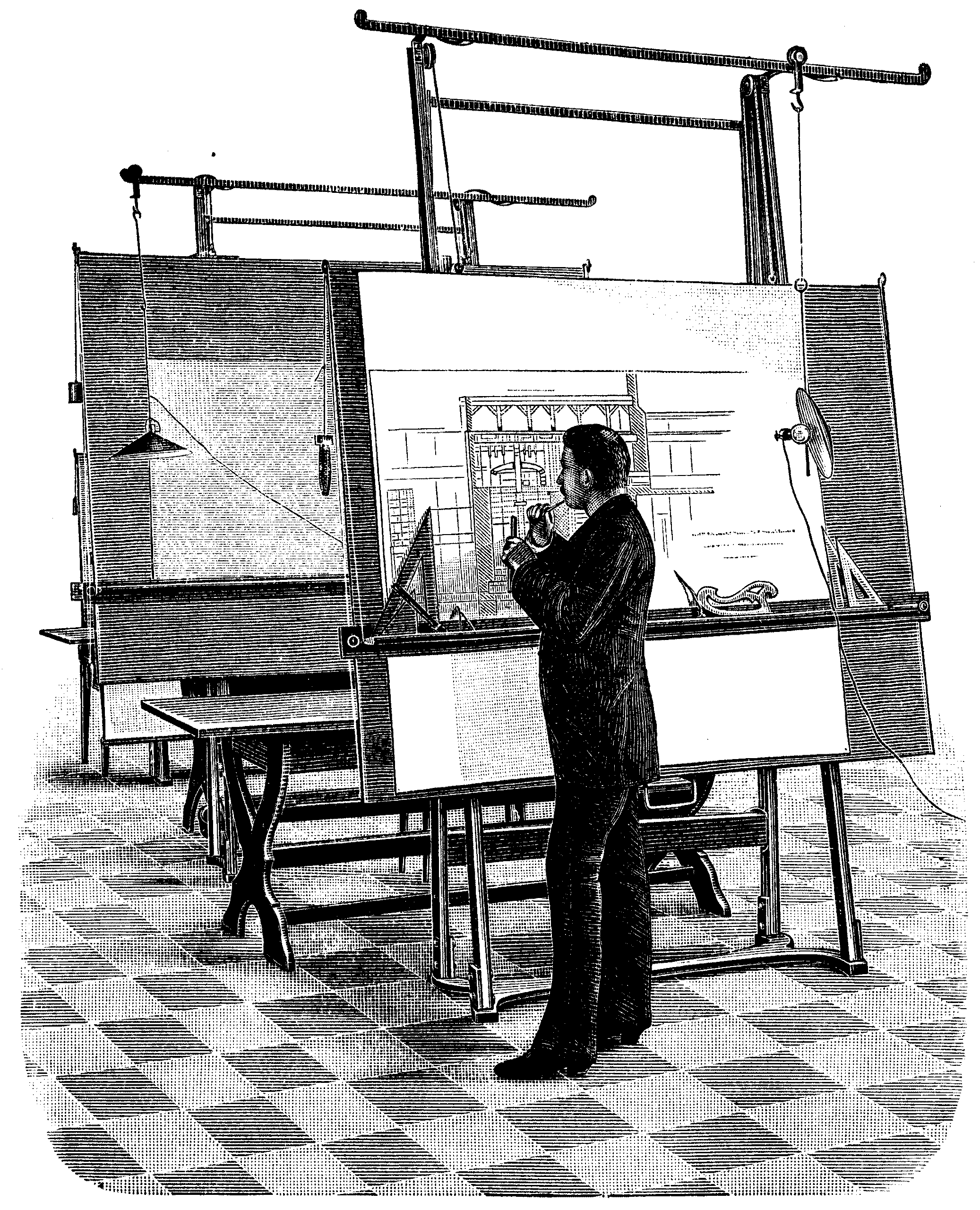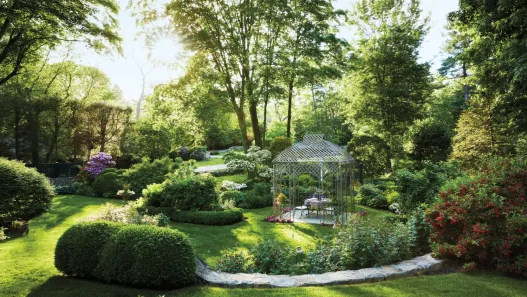Garden and landscape architecture is more than just arranging plants in a pleasing way; it is a complex mix of art and science that transforms outdoor spaces into functional, beautiful environments. This field involves designing gardens, parks and public spaces with both aesthetic appeal and ecological sustainability in mind. Landscape architects play a vital role in improving quality of life by creating open spaces that enhance well-being, encourage social interaction and protect the environment.

Definition and Importance
Garden and landscape architecture is defined as the art and practice of designing outdoor spaces to make them both visually attractive and functional. This discipline encompasses everything from the layout of urban parks to the design of private gardens. The importance of this discipline lies in its ability to influence how we interact with our environment by encouraging a deeper connection with nature and improving mental and physical health. Carefully designed landscapes can provide spaces for rest, relaxation and socialization, strengthen community ties and enhance urban environments.
Historical Context
The history of garden and landscape architecture dates back to ancient civilizations. In Egypt, gardens were an integral part of religious practices and were often designed to reflect the paradise of the afterlife. The Romans expanded on this concept, creating elaborate gardens that showcased their wealth and sophistication. During the Renaissance, landscape design flourished in Europe with the emergence of more formal gardens emphasizing symmetry and order. The 18th and 19th centuries saw the rise of the picturesque movement, celebrating natural beauty and the integration of landscapes into art. As society has evolved, so have the principles of landscape architecture, responding to urbanization and the growing appreciation for nature in the modern world.
Basic Principles of Design
At the core of garden and landscape architecture, there are several fundamental principles that guide the design process. Unity is crucial, ensuring that all elements of the design work together harmoniously. Balance creates a sense of stability in the landscape, whether symmetrical or asymmetrical. Scale and proportion help create spaces that feel comfortable and inviting. Furthermore, the use of color, texture and form allows designers to evoke certain emotions and atmospheres. Sustainability is becoming increasingly important in contemporary designs that focus on native plant selections, water conservation and ecological balance. These principles guide landscape architects in creating spaces that are not only beautiful but also environmentally sensitive.
The Role of Landscape Architects
Landscape architects serve as both artists and scientists tasked with solving complex design challenges. They assess the natural environment, considering factors such as topography, climate and soil conditions, and then integrate these elements into their designs. Their role extends beyond aesthetics; they must also address functional needs such as drainage, accessibility and safety. Collaboration is essential as landscape architects often work with urban planners, architects and environmental scientists to create harmonious spaces. They advocate sustainable practices, ensuring that the landscapes they design benefit both people and the planet.
Overview of Significant Work
Throughout history, many landscape architects have left their mark with iconic designs. One of the most prominent is Frederick Law Olmsted, best known for his design of Central Park in New York. His work emphasized the importance of public green spaces, transforming urban environments into accessible oases. Another important landscape architect, Roberto Burle Marx, blended modern design with Brazilian flora to create living gardens that celebrate the biodiversity of the region. Contemporary examples include the High Line in New York City, where a repurposed elevated railroad was transformed into a linear park, demonstrating innovative urban renewal. These works demonstrate the profound impact that garden and landscape architecture can have on our urban landscapes, enriching our daily lives by combining functionality with art.
In conclusion, garden and landscape architecture is a vital discipline that shapes our experience of the outdoors. By understanding its history, its principles and the role of landscape architects, we can appreciate the art and science behind the spaces we inhabit, creating a greater connection with the natural world.
Landscape architecture is a fascinating blend of art and science, focusing on the design of outdoor spaces to enhance the human experience while respecting nature. This field encompasses a variety of elements that contribute to creating beautiful, functional and sustainable environments. Garden and landscape architects play a crucial role in shaping parks, gardens, urban plazas and even private backyards. In this research, we will examine the key elements of landscape design, each of which contributes uniquely to the overall aesthetics and functionality of outdoor spaces.
Basic Elements of Landscape Design
Plants and Planting Design
Plants are the heart of any landscape design, providing color, texture and life to outdoor spaces. The art of plant design involves choosing the right plants for a specific location, taking into account factors such as climate, soil type and the intended use of the space.
For example, a vibrant flower garden can attract pollinators and create a lively atmosphere, while carefully selected shrubs and trees can provide privacy and shade. Landscape architects often take into account seasonal changes, ensuring that the garden remains dynamic throughout the year. This thoughtful approach not only enhances visual appeal, but also promotes ecological balance by creating habitats for diverse wildlife.
Numerous real-world examples, such as the stunning gardens of the Royal Botanic Gardens in Kew, London, showcase the beauty of the global flora of diverse plants while promoting conservation efforts.
Hard Landscape Features
While plants add color and life, hardscape elements add structure and functionality to outdoor spaces. These elements include pathways, patios, walls and decks that define spaces and facilitate movement through the landscape. The choice of material (stone, wood or concrete) plays an important role in the overall aesthetics and durability of these elements.
Consider how a winding stone path can guide visitors through a garden, inviting exploration and connecting different areas. Also, well-placed seating areas, such as a wooden deck overlooking a tranquil pond, can create inviting spots for relaxation and contemplation.
In urban settings, hardscape elements are essential for creating functional public spaces. The High Line in New York is one of the best examples of blending the built environment with nature, transforming a former elevated railroad into a vibrant park with pathways, seating and art installations.
Water Elements
Water features add a unique dimension to landscape design, providing tranquility and a sensory experience. Fountains, ponds and streams act as focal points, pleasing the eye and creating a peaceful environment.
The sound of running water can mask city noise, making outdoor spaces more inviting. A well-designed pond can support aquatic life while providing a habitat for birds and other wildlife. Moreover, water features can be a sustainable element by collecting rainwater for irrigation or creating a habitat for beneficial organisms.
A notable example is Gardens by the Bay in Singapore, where stunning man-made waterfalls and reflecting pools coexist with lush vegetation, creating a harmonious blend of nature and technology. These areas not only captivate visitors, but also serve ecological purposes, emphasizing the importance of water in landscape design.
Lighting and Ambience
The right lighting can dramatically transform outdoor spaces, extending their usability well into the evening and creating a magical atmosphere. Landscape architects enhance the overall experience by strategically placing lights to highlight features such as trees, pathways and water features.
Soft, ambient lighting can create cozy gathering spots, while brighter lights can define pathways and guide visitors safely through the space. Furthermore, innovative lighting designs can introduce artistic elements, transforming a garden into a mesmerizing night landscape.
Consider the breathtaking light installations at the annual Vivid Sydney festival, where iconic landmarks and gardens are illuminated to create a stunning visual spectacle that attracts thousands of visitors. Such applications demonstrate how lighting can elevate the aesthetic and functional qualities of outdoor spaces.
Sustainability Applications
In today’s world, sustainability is a critical aspect of landscape design. Garden and landscape architects strive to create spaces that not only meet aesthetic needs but also promote environmental stewardship. This includes selecting native plants that require less water and maintenance, using permeable materials on hardscapes to reduce runoff, and incorporating rain gardens to manage stormwater.
Sustainable practices also include designing landscapes that support biodiversity and encourage wildlife. For example, creating habitats such as butterfly gardens or bird-friendly areas can help sustain local ecosystems.
An inspiring example is the Living Roofs initiative in cities like Chicago, where green roofs are used to combat urban heat, improve air quality and support biodiversity. These efforts demonstrate how thoughtful landscape design can contribute positively to both the environment and society.
In conclusion, the art of landscape design is a multifaceted discipline that celebrates the interaction between nature and human creativity. By thoughtfully integrating plants, hardscape features, water features, lighting and sustainable practices, garden and landscape architects create outdoor spaces that are not only beautiful but also functional and environmentally sensitive. As we continue to explore and innovate in this field, the potential to enhance our outdoor experiences continues to be limitless.
Garden and landscape architecture is a fascinating blend of art, ecology and design. These professionals create open spaces that not only enhance the beauty of the environment, but also improve the quality of life for people who live in or visit these areas. From urban parks to private gardens, landscape architects play a vital role in shaping our environment. Their work is often based on sustainability and a deep understanding of local ecosystems, making their contributions important in today’s world of rapid urbanization and climate change. In this research, we explore the lives and legacies of some of the most influential garden and landscape architects whose creativity and vision have left an indelible mark on the field.
Famous Garden and Landscape Architects
Frederick Law Olmsted
Frederick Law Olmsted is often referred to as the father of American landscape architecture. Born in 1822, Olmsted’s vision changed the way we perceive and design public spaces. He is best known for co-designing New York’s Central Park, a revolutionary project that introduced the concept of a natural oasis in an urban environment. Olmsted believed that parks should be accessible to all and provide an escape from the chaos of city life. His design utilized rolling hills, meandering paths and tranquil bodies of water to create a harmonious blend of nature and recreation.
Beyond Central Park, Olmsted’s influence spread to other famous landscapes, such as the Emerald Necklace in Boston and the grounds of the US Capitol in Washington, D.C. His philosophy emphasized the importance of landscape in social reform, advocating green spaces that promote health and well-being. Olmsted’s legacy continues to inspire landscape architects today, reminding us of the vital role that carefully designed outdoor spaces play in strengthening community and connection.
André Le Nôtre
The 17th-century French landscape architect André Le Nôtre is famous for his grand designs that epitomize the principles of formal garden architecture. His most important work, the gardens of the Palace of Versailles, exemplify the grandeur and symmetry characteristic of the Baroque period. Le Nôtre’s design philosophy revolved around the meticulous arrangement of plants, water features and pathways to create a sense of order and beauty.
The use of perspective and axial alignment is groundbreaking, drawing the eye to focal points and enhancing the viewer’s experience. Le Nôtre’s gardens were not only about aesthetics; they also served as a symbol of power and control over nature. Le Nôtre’s influence can be seen in the many European gardens and parks that followed him, where geometry and order were paramount. Today, Le Nôtre’s work continues to be studied and admired, demonstrating the timeless appeal of his design principles.
Roberto Burle Marx
Roberto Burle Marx was a Brazilian landscape architect whose innovative designs celebrated the unique flora of South America. Born in 1909, Marx was a pioneer in the use of native plants in landscape architecture, emphasizing biodiversity and ecological sustainability. Marx’s work is characterized by bold colors, organic shapes and artistic patterns that reflect his background in painting and modern art.
One of his most famous projects is the gardens of the Copan Building in São Paulo, where he transformed urban areas into lush green retreats. Burle Marx believed that gardens should be an extension of the natural world, blurring the lines between architecture and nature. His legacy is a testament to the importance of integrating local ecosystems into landscape design and inspires future generations to appreciate and protect the environment.
Peter Walker
Peter Walker is a contemporary landscape architect known for his minimalist approach and focus on the relationship between landscape and architecture. His designs often feature clean lines, open spaces and a careful integration of water and vegetation. Walker co-designed the National 9/Memorial in New York, a poignant example of how landscape can serve as a space for reflection and remembrance.
His work emphasizes the importance of context and encourages a dialogue between the built environment and the natural world. Walker’s innovative thinking has led to numerous award-winning designs and made him an important figure in modern landscape architecture. Addressing issues such as climate resilience and urban heat islands, she advocates for landscapes that are not only beautiful but also functional.
Kathryn Gustafson
Kathryn Gustafson is a renowned landscape architect known for her sculptural approach to design. Her work often blurs the lines between landscape and art, creating spaces that invite interaction and contemplation. Gustafson’s designs, such as the Diana, Princess of Wales Memorial Fountain in London and the Gardens of the National Gallery of Canada, showcase his ability to transform ordinary landscapes into extraordinary experiences.
His philosophy revolves around the idea that landscapes should stimulate the senses and offer visitors a multidimensional experience. Gustafson’s work is characterized by fluid forms, innovative materials and a deep respect for the environment. Emphasizing the importance of creating spaces that resonate with people, Gustafson’s contributions are vital to the evolving field of landscape architecture.
Ultimately, the legacies of these renowned garden and landscape architects demonstrate the profound impact that thoughtful outdoor design can have on our lives. Their innovative approaches and dedication to creating harmonious spaces continue to inspire and shape our understanding of landscape architecture today. As we celebrate their contributions, we also recognize the need for sustainable, inclusive and beautiful outdoor environments that enhance our quality of life.
Case Studies on Iconic Landscapes
The world around us is full of breathtaking landscapes that not only serve aesthetic purposes but also enhance our quality of life. Garden and landscape architects play an important role in shaping these outdoor spaces, bringing together art, architecture and nature. By studying iconic landscapes, we can appreciate the creativity and thought that goes into their design. Let us examine some remarkable case studies that highlight the brilliance of landscape architecture.
Central Park, New York
Central Park is a masterpiece of landscape architecture that transformed a crowded urban environment into a tranquil natural oasis. Designed by Frederick Law Olmsted and Calvert Vaux in the mid-19th century, this vast 843-acre park was a visionary project that aimed to provide New Yorkers with a green escape from the chaos of the city. Central Park’s design features rolling hills, tranquil lakes and meandering paths that encourage exploration and relaxation.
A key concept of the park is the seamless integration of the natural landscape with urban elements. The designers meticulously planned the topography, selecting native plant species that would thrive in the region’s climate. This not only preserved the local ecosystem, but also created a diverse habitat for wildlife. Today, Central Park serves as a vital recreational space, hosting millions of visitors each year who come to jog, picnic and enjoy concerts, proving that thoughtful landscape design can enrich urban life.
Versailles Gardens, France
The Gardens of Versailles represent the pinnacle of formal landscape design. Commissioned by King Louis XIV in the 17th century, they are a stunning reflection of absolute monarchy and artistic ambition. Designed by landscape architect André Le Nôtre, the gardens feature meticulously manicured lawns, symmetrical flower beds and grand fountains that exemplify the splendor of the French Baroque style.
Le Nôtre’s approach emphasizes order and control over nature, creating a space where every element is carefully arranged to convey power and beauty. Spanning hectares, the gardens showcase a variety of plants and intricate pathways that lead visitors through a landscape designed to impress. The Gardens of Versailles not only served as a royal retreat, but also set a standard for garden design across Europe, influencing countless estates and public gardens for generations.
High Line, New York
The High Line is a modern example of innovative landscape architecture breathing new life into an abandoned urban structure. Originally a railroad line towering above the streets of Manhattan, the structure has been transformed into a public park by James Corner Field Operations, with planting design by Piet Oudolf. This project demonstrates the potential of reusing urban spaces for public enjoyment and ecological restoration.
The design of the High Line emphasizes the beauty of natural growth in an urban environment. Native plants, grasses and wildflowers thrive alongside pathways made from reclaimed materials. The park features a variety of seating areas, art installations and viewpoints that invite visitors to interact with their surroundings. By creating a green corridor through the city, the High Line has revitalized the neighborhood, promoted tourism and increased community interaction while supporting biodiversity in an urban environment.
Eden Project, United Kingdom
The Eden Project in Cornwall, England, is a groundbreaking example of sustainable landscape architecture. Designed by Sir Nicholas Grimshaw, this unique project consists of a series of biomes that harbor ecosystems ranging from tropical rainforests to Mediterranean gardens. Opened in 2001, the Eden Project aims to educate visitors about biodiversity and the importance of conservation.
Constructed from geodesic domes composed of hexagonal cells, the biomes allow natural light to penetrate while maintaining a controlled climate for the plants inside. This innovative design not only showcases the beauty of nature, but also emphasizes the relationship between architecture and the environment. The surrounding gardens feature native plants and sustainable practices, reinforcing the project’s commitment to ecological awareness. The Eden Project serves as a global model for sustainable tourism and environmental education, inspiring visitors to appreciate and protect the planet.
Getty Center Gardens, Los Angeles
Designed by architect Richard Meier, the Getty Center is not only an architectural marvel, but also home to stunning gardens that enhance its artistic mission. The Central Garden, designed by artist Robert Irwin, is a living work of art that changes with the seasons, inviting visitors to experience nature as a dynamic and ever-evolving entity.
The garden features a flowing stream, a variety of plant species and a labyrinth of pathways that encourage exploration and contemplation. Irwin’s design emphasizes the relationship between art and nature, creating spaces that provoke thought and inspire creativity. The Getty Center Gardens provide a beautiful backdrop for the museum’s impressive art collection and a tranquil escape for visitors. This integration of art and landscape exemplifies how thoughtful design can elevate cultural institutions and enrich the visitor experience.
Ultimately, these iconic landscapes demonstrate the profound impact of garden and landscape architecture on our environment. Through careful design, these spaces not only beautify their surroundings, but also foster community, inspire creativity and promote ecological awareness. As we continue to celebrate the art of outdoor design, it is essential to recognize the visionaries behind these extraordinary projects and their contribution to our shared experience of nature.
Landscape architecture is a unique blend of art and science that focuses on the design of outdoor spaces to enhance the natural environment and improve the quality of life of the people who live in these areas. Garden and landscape architects play an important role in shaping parks, gardens, plazas and urban environments, creating spaces that are not only beautiful but also functional and sustainable. As we look towards the future, the field of landscape architecture is evolving, embracing new trends and technologies that will shape the landscapes of tomorrow.
The Future of Landscape Architecture
As we step into the future, landscape architecture is poised to undergo significant transformations. Challenges posed by urbanization, climate change and changing societal values are prompting landscape architects to rethink their design approach. This evolution is characterized by a commitment to sustainability, the integration of advanced technologies and a strong emphasis on community engagement. As we explore these aspects, we can envision a future where outdoor spaces are more flexible, inclusive and responsive to the needs of both people and the planet.
Sustainable Design Trends
Sustainable design is at the forefront of landscape architecture, reflecting a growing awareness of environmental issues. In the future, there will be an increasing emphasis on creating spaces that minimize their ecological footprint while maximizing biodiversity. This includes using native plants that require less water and maintenance, designing landscapes that capture and use rainwater, and incorporating green roofs and walls that improve air quality and thermal performance.
One inspiring example is the High Line in New York City, where a former elevated railroad has been transformed into a vibrant public park featuring native plant species and sustainable practices. This project not only revitalized a neglected area, but also set a precedent for future urban landscapes that prioritize ecological health as well as recreational use.
The Role of Technology
Technology is revolutionizing the field of landscape architecture by providing tools that enhance design processes and improve project outcomes. Geographic Information Systems (GIS) and 3D modeling software allow architects to analyze sites more effectively and visualize their designs in a detailed and immersive way. Drones and remote sensing technologies help survey large areas, providing valuable data for informed decision-making.
Moreover, smart technology is increasingly being integrated into landscaping projects. For example, automated irrigation systems adjust water use according to weather conditions, while sensors monitor soil health and plant growth. These innovations enable more efficient use of resources and help maintain the long-term sustainability of landscapes.
Community Engagement and Public Spaces
The future of landscape architecture also depends on the active participation of communities in the design process. The involvement of local residents and stakeholders ensures that the outdoor spaces created truly reflect the needs and desires of the people who use them. This participatory approach improves the social fabric of neighborhoods by fostering a sense of ownership and pride within the community.
Projects such as the participatory design of parks in various cities demonstrate the power of community engagement. By organizing workshops and consulting with residents, landscape architects can create spaces that not only serve practical purposes, but also become popular meeting places that strengthen community ties.
Climate Resilience Strategies
As climate change continues to impact our environment, landscape architects are tasked with developing strategies to increase climate resilience. This includes designing landscapes that can withstand extreme weather events such as floods, droughts and heat waves. Techniques such as creating bioswales to manage stormwater, selecting drought-resistant plants and designing urban forests to reduce heat islands are becoming increasingly important.
An example of effective climate resilience can be seen in New Orleans, where landscape architects have implemented green infrastructure to restore natural hydrology and protect the city from flooding. These approaches not only protect communities, but also restore vital ecosystems and improve urban aesthetics.
Innovations in Urban Landscape Architecture
Urban areas are evolving rapidly and landscape architecture is adapting to meet the unique challenges of city living. Innovations in this field focus on creating multifunctional spaces that accommodate a variety of activities while increasing urban biodiversity. Concepts such as vertical gardens and pocket parks are gaining popularity, providing green relief in densely populated areas.
The transformation of underutilized spaces such as alleyways and rooftops into vibrant green spaces demonstrates the potential of urban landscape architecture. Projects such as Bosco Verticale in Milan show how innovative design can integrate nature into high-density living, improving residents’ quality of life and creating a connection with the natural world.
In conclusion, the future of landscape architecture is bright and full of potential. With a strong focus on sustainability, technology, community engagement, climate resilience and urban innovation, landscape architects are well equipped to create outdoor spaces that not only meet the needs of today but also anticipate the challenges of tomorrow. As we celebrate the art of outdoor design, we also embrace a future where our landscapes are not only beautiful, but also vital components of a healthy and sustainable world.
Conclusion: The Impact of Landscape Design on Society
Landscape design is more than just arranging plants and pathways; it is a vital part of our environment that shapes how we live, interact and experience the world around us. When we look at the multifaceted impacts of landscape design, we can see how it enhances our quality of life, has cultural significance, offers environmental benefits, creates aesthetic experiences and faces future challenges. Each of these elements intertwine to create a rich tapestry reflecting social values and aspirations.
Improving Quality of Life
Landscape design plays a crucial role in improving the quality of our daily lives. Well-designed parks, gardens and public spaces provide spaces for rest, relaxation and social gatherings. They allow people to unwind and connect with nature, away from the hustle and bustle of urban life. Research has shown that access to green spaces reduces stress, improves mental health and encourages physical activity. For example, urban parks in cities such as New York and London not only serve as places for leisure, but also foster community interactions by nurturing relationships between different groups of people.
Cultural Significance
The cultural importance of landscape design cannot be overstated. Gardens and public spaces often reflect the history, values and traditions of a society. For example, Japanese gardens embody the principles of harmony and tranquility, while Mediterranean gardens showcase vibrant colors and a love of the outdoors. These spaces tell stories about the people who live in them, preserving cultural heritage and fostering a sense of identity. Festivals, ceremonies and daily activities often take place in these landscapes, reinforcing their importance as social centers where culture and nature intersect.
Environmental Benefits
Landscape design also plays an important role in environmental sustainability. Careful landscaping can help reduce urban heat, improve air quality and manage stormwater runoff. Green roofs and urban gardens not only increase biodiversity, but also contribute to reducing energy consumption by insulating buildings. Cities like Singapore, for example, are leading the way in integrating nature into urban environments and demonstrating how landscape architecture can combat climate change while providing functional and beautiful spaces. These initiatives not only benefit the environment, but also educate communities on the importance of sustainability.
Aesthetic Experience
The aesthetic experience offered by well-designed landscapes enriches our lives in profound ways. A beautifully landscaped space can stir emotions, inspire creativity and promote a sense of peace. Whether it is the vibrant colors of a flower garden, the serene lines of a water feature, or the inviting pathways of a park, these designs invite people to pause and appreciate their surroundings. Art installations in these spaces further enhance the experience by combining nature with human creativity. Public artworks, such as sculptures or murals in parks, create a dialog between the landscape and visitors, transforming ordinary spaces into extraordinary experiences.
Future Directions and Challenges
As we look towards the future, landscape architects face both exciting opportunities and significant challenges. Rapid urbanization and climate change require innovative design approaches that prioritize flexibility and adaptability. There is an increasing emphasis on creating multifunctional spaces that serve diverse community needs while maintaining ecological integrity. Furthermore, addressing social equity in landscape design is critical; ensuring that all communities have access to quality green spaces is essential for promoting inclusive environments. By embracing technology, sustainable practices and community engagement, landscape architects can continue to improve our habitats in ways that will resonate with future generations.
Ultimately, the impact of landscape design on society is profound and multifaceted. From enhancing quality of life and reflecting cultural narratives to providing environmental benefits and enriching aesthetic experiences, the work of garden and landscape architects is vital. As we meet the challenges of the future, their creativity and vision will be crucial in shaping sustainable, inclusive and beautiful outdoor spaces that promote connectivity and well-being for all.






















